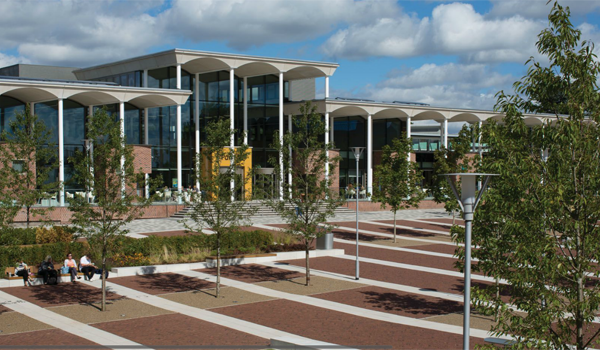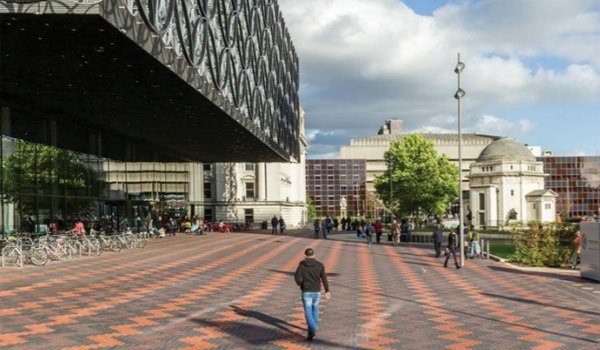
How architectural projects can benefit from landscape design
In the latest issue of PSB Magazine, Joanne Roberts, category marketing manager for landscape at Wienerberger, discusses the benefits of incorporating landscaping plans with architectural design…
For many years, landscape architecture and traditional architecture have been considered two separate design packages with different agendas.
While architecture has conventionally been concerned with the built environment and closed, indoor spaces, landscaping is understood as relating to the natural environment and open, outdoor spaces.
However, an integration of these two different spheres of design work is increasingly becoming the norm for construction projects.
Merging interior and exterior
Viewing a build and its surrounding area as separate design entities is fast becoming outdated. Having a holistic view of both interior and exterior elements of the build is starting to present tangible benefits to building projects, both in terms of aesthetics, and the quality of life for those inhabiting and using the space.
For example, according to research, the look and design of an academic campus can have a positive impact on both examination results and the wellbeing of students.
Architects and landscape architects have the same agenda: endeavouring to benefit the public through their work. The quality of life and wellbeing of individuals is partly dependent on their finished designs.
The benefits of landscape design
Wienerberger believes that the environmental, social and economic benefits of creating a suitable landscape exterior still carry great relevance in the construction industry.
Feeling satisfied and inspired by our surroundings is an important factor in giving us some zeal in our personal and professional lives; this, in turn, can have a positive impact in social relations and interactions.
Therefore, incorporating intelligent and thoughtful landscaping plans with architectural design can reap many rewards for a finished project. Alas, it is not always a priority.
While many understand that landscaping shouldn’t be an afterthought, quite often it isn’t considered until too late in the day. Considering the outside appeal of a building as part of its construction is crucial, as the aesthetics and kerb appeal are invaluable.
Considering the lasting impact on the environment as well as for those operating in the building is also important. Enhancing the balance between a sustainable build and an effective landscape not only offers valuable protection of the building, but also positively impacts the surrounding environment.
Preventing soil erosion, filtering the contaminants of storm water run-off and encouraging groundwater recharge are just a few of the ways in which landscape design can help to lessen a build’s impact on its surrounding area.
If architects are looking to execute a project that is going to deliver high visual impact, while using natural products, then landscaping certainly shouldn’t be overlooked.
As with any new project, key considerations are made regarding the kind of products that are going to be used to ensure the end build looks and works in the way that it had initially been imagined: landscaping should form part of this.

Architects should incorporate landscaping into their initial planning to ensure the best result is achieved
In order to create an external landscape that boasts aesthetic results, while also ticking all of the sustainable boxes that will ensure the project will survive the test of time and remain impressive from a visual perspective, it is essential to carefully consider an effective material to use.
Clay in construction
For thousands of years, clay has been a key ingredient in construction projects around the world, and it is no different for landscaping.
Acting as a naturally sustainable solution for many building needs, it requires very little maintenance, making it an extremely cost-effective material for landscapes. Once installed, a single clay paver can last over 200 years, offering ultimate value for money, combined with a long-term sustainable paving solution.
Its strong and stable qualities boast temperature and sound control benefits wherever it is used, offering only the highest build quality.
Integrating landscape design and traditional architecture
Leaving the landscaping to the very end of the building process means that budgets have been spent, resulting in no resource left to give the project those all-important finishing exterior touches.
To rectify this issue, architects should be incorporating landscaping into their initial planning to ensure that the build in its entirety, is completed to a high standard, giving it the visual and operational gravitas it deserves.
Landscape architecture can have extensive implications and ramifications on architectural projects. It has the potential to enhance and improve a landscape. Soft landscaping might also go some way help to secure a greener and more sustainable future.
In this regard, perhaps it’s time for you to consider how landscape design can benefit your next architectural project.
Read more in the July/August issue of PSB Magazine
Latest news

17th April 2025
Nuaire shares expertise at Specifi Mechanical Services events in 2025
Indoor air quality and ventilation manufacturing specialist Nuaire is pleased to be exhibiting at the Specifi Mechanical Services events once again in 2025.
Posted in Air Conditioning, Articles, Building Industry Events, Building Industry News, Building Products & Structures, Building Services, Exhibitions and Conferences, Facility Management & Building Services, Heating, Ventilation and Air Conditioning - HVAC, Restoration & Refurbishment, Retrofit & Renovation
15th April 2025
West Fraser: CaberDek earns top marks from Home Counties carpentry specialist
A specialist carpentry sub-contractor covering housing sites across a large swathe of the Home Counties has come to value CaberDek from the West Fraser range for a variety of reasons: not least because the high quality panel product doesn’t destroy his operatives’ electric saws!
Posted in Articles, Building Industry News, Building Products & Structures, Building Systems, Case Studies, Restoration & Refurbishment, Retrofit & Renovation, Roofs, Timber Buildings and Timber Products, Wooden products
15th April 2025
GEZE: The Role of Access Control Systems in Enhancing Building Safety
Jane Elvins, Specification and Business Development Manager at GEZE UK, delves into the role of access control systems in enhancing building safety…
Posted in Access Control & Door Entry Systems, Architectural Ironmongery, Articles, Building Industry News, Building Products & Structures, Building Services, Doors, Facility Management & Building Services, Health & Safety, Restoration & Refurbishment, Retrofit & Renovation, Security and Fire Protection
11th April 2025
Don’t Do a Dave! It’s Time to Lock FIT Show 2025 in Your Calendar!
It’s that time again – FIT Show is back! You could be forgiven for thinking there won’t be much new to see when FIT Show returns to the NEC from 29 April – 1 May. Wrong!
Posted in Articles, Building Industry Events, Building Industry News, Building Products & Structures, Building Services, Continuing Professional Development (CPD's), Exhibitions and Conferences, Information Technology, Innovations & New Products, Restoration & Refurbishment, Retrofit & Renovation, Seminars, Training
 Sign up:
Sign up: 